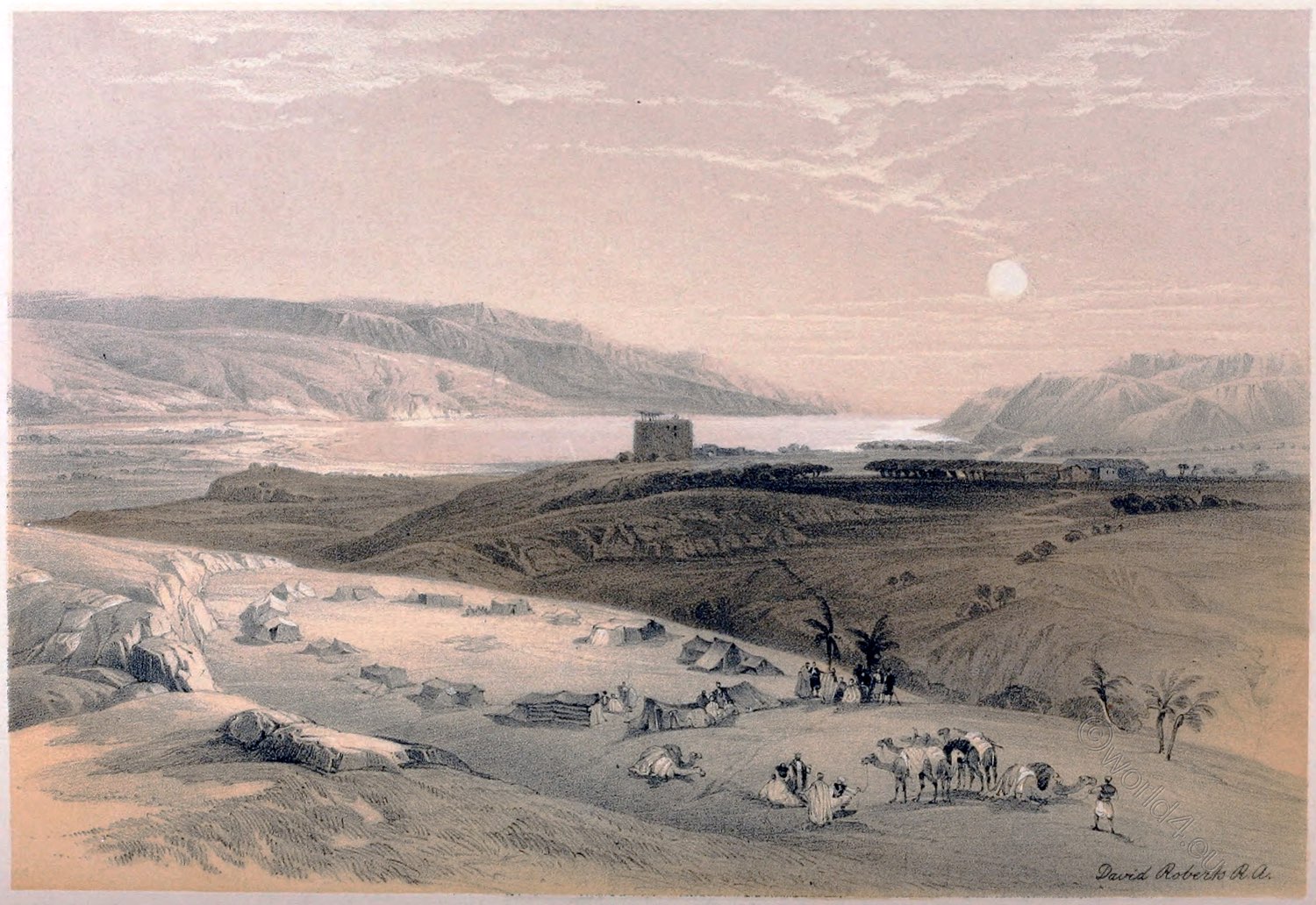JERICHO.
Jericho. April 3rd, 1839.
The ancient Jericho has wholly disappeared, with the exception of some foundations of the external walls. The modern, which bears the Arab name of Eriha, is a miserable village, with a Saracenic tower, entitled the Castle, in its centre. The houses are ruins, formed of ruins, and generally surrounded with a thorny hedge, within which the cattle are brought at night, thus increasing the squalidness of the scene. The population amount to about two hundred souls. Yet it stands in a plain capable of the highest fertility, once the famous soil of the palm, the vine, the balsam-tree, and almost every other rich product of the earth.
The climate of Jericho is excessively hot, and especially unhealthy for strangers. In traversing the short distance between Jerusalem and Jericho, the traveller passes from a pure and temperate atmosphere into the sultry heat of an Egyptian climate. Nor is this surprising, when it is considered that the caldron of the Dead Sea and the Valley of the Jordan lie several hundred feet below the level of the ocean, and nearly three thousand feet lower than Jerusalem. 1)
To the left of the Castle are the ruins of a Christian Church, on the walls of which may still be seen some very good Greek paintings. The dark tents of a party of Bedouins occupy the foreground; the cattle are enclosed in the centre of the circle during the night for protection. The more extensive encampment of the pilgrims lay behind the sand-hills, at some distance from the Castle.
The Artist’s description of this scene and its accompaniments brings the whole clearly and gracefully before the eye.
“Our encampment was soon buried in sleep as the night came on, though occasionally I caught sounds of the song and the dance, either from the tents of the pilgrims or our Arab guard. The night was one of the most beautiful which I had seen even in that country, and the moon was reflected in all its brightness on the silent waters of the Dead Sea. . . .
“I lay down, with my tent-door open, watching the lights glittering from tent to tent, and wondering at the combination of creeds gathered together, to visit scenes so dear to the memory of the Christian. Many were from the most distant parts of the Russian Empire, and near me sat a black group of Abyssinians in their blue turbans. . . .
“Before two in the morning, the whole host were roused; and at three, a gun gave the signal that the Governor was on horseback, and had moved forward. We followed, and overtook him. Lights were carried before the Governor. The moon was casually obscured by heavy clouds ; but its light now and then burst upon the long cavalcade, seen as far as the eye could reach. We moved on in silence, and the heavy tread of the dense mass was the only sound that broke the stillness of the Desert. Day at last began to dawn, and the scene became only more interesting.” 2)
1) Biblical Researches, ii. 282. 2) Roberts’s Journal.
Source: The Holy Land, Syria, Idumea, Arabia, Egypt, & Nubia, by David Roberts (1796-1864), George Croly, William Brockedon. London: Lithographed, printed and published by Day & Son, lithographers to the Queen. Cate Street, Lincoln’s Inn Fields, 1855.
Continuing
Discover more from World4 Costume Culture History
Subscribe to get the latest posts sent to your email.

